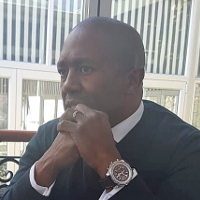2017 saw South African Tourism announce that it had set itself the ambitious goal of increasing the country’s visitor numbers by five million by the year 2022. This was just a couple of months after Sisa Ntshona joined the organization as Chief Executive, and it’s been an interesting time at the helm for Ntshona, as told to editor Dylan Rogers over lunch in Johannesburg.
Breaking down that “Five in Five…” goal, SA Tourism wants to see four million more international visitors and a million more domestic travellers – on top of 2017’s numbers – by 2022, and if the country is successful in hitting those targets, Ntshona will be a happy man.
As it stands, he concedes that the numbers are slightly down on last year, but he remains bullish that the “Five in Five…” programme won’t follow a linear progression and that a foundation needs to be laid.
I’m interested in that domestic traveller number and put it to Ntshona that perhaps this hasn’t previously been a focus area for SA Tourism?
“Only now are we starting to develop products that focus on domestic consumption, whereas in the past there was perhaps a preoccupation with marketing South Africa solely at the international traveller,” agrees Ntshona. “If you look back, historically, during the Apartheid years, the pool was so small that it didn’t make sense to market to the domestic traveller.”
It’s an interesting observation, with Ntshona pointing out that even post-1994, mobility was not necessarily ingrained in a segment of the South African population that just 30, 40 years ago needed passes just to move from one city to the next.
“These things are generational,” he says. “If you grew up in a family that travelled, you travelled. Travel is about confidence, and that’s why business travel is so important, because for a lot of people it’s their first introduction to travel.”
That’s one of the reasons why SA Tourism has identified the ‘bleisure’ concept as an opportunity and has been working with the Association of Southern African Travel Agents (ASATA) on a programme to encourage corporates to get their travellers to add some leisure travel days to their business trips.
“This is where we’re telling corporates that they also have a role to play in stimulating domestic tourism,” says Ntshona.
Another area is the business events space, where SA Tourism has a highly-respected National Convention Bureau that works hard at attracting international events to South Africa. Already the country is ranked – according to the world standard ICCA rankings – as the premier events destination on the African continent, but SA Tourism has a broader brief.
“Now that we’ve proved we can host big events, as a country, we are tasked with ensuring geographic spread,” says Ntshona. “It can’t only happen in Cape Town, Sandton and Durban. We now have to light up the other areas of the country.”
To this end, SA Tourism offers incentives to those organisers open to taking their events to South Africa’s ‘smaller’ regions. Ntshona cites the likes of East London and Kimberley that both have international convention centres, but who obviously aren’t front of mind when a destination is being considered.
“The incentives help stimulate the economy in that region and create space for the National Convention Bureau to bid for big international events,” he says. “Instead of going for bigger, how about ensuring geographic spread, because if the water crisis in Cape Town has taught us anything, it’s that concentration is a risk.”
Speaking of Cape Town, say “Day Zero” and Ntshona flinches.
“There were the unintended consequences around the communication related to the water crisis,” he says. “Firstly, by coming up with ‘Day Zero’ may have worked domestically by shocking everyone into action, but globally, it just took on a life of its own and it was as if there was an ‘Armageddon’ moment with a countdown.”
That being said, Ntshona doesn’t believe the water crisis has been all doom and gloom.
“Positively, it has encouraged innovation, as suddenly, conferences at the CTICC became ‘water neutral’ and PCOs have been challenged to become more innovative around water consumption,” he says.
Beyond that, he sees an opportunity for South Africa.
“It’s our gift to the world – a playbook about how to respond to a water crisis,” says Ntshona. “We want to own the water narrative globally. We want to position South Africa as the place to go to, to speak about water.”
Further than that, Ntshona also believes the time is right to position the country as something more than a place that just offers “the three Bs: the beach, the Berg and the bush.”
“We just need to balance it with other offerings,” he says. “It’s taken a crisis for us to get our act together.”

